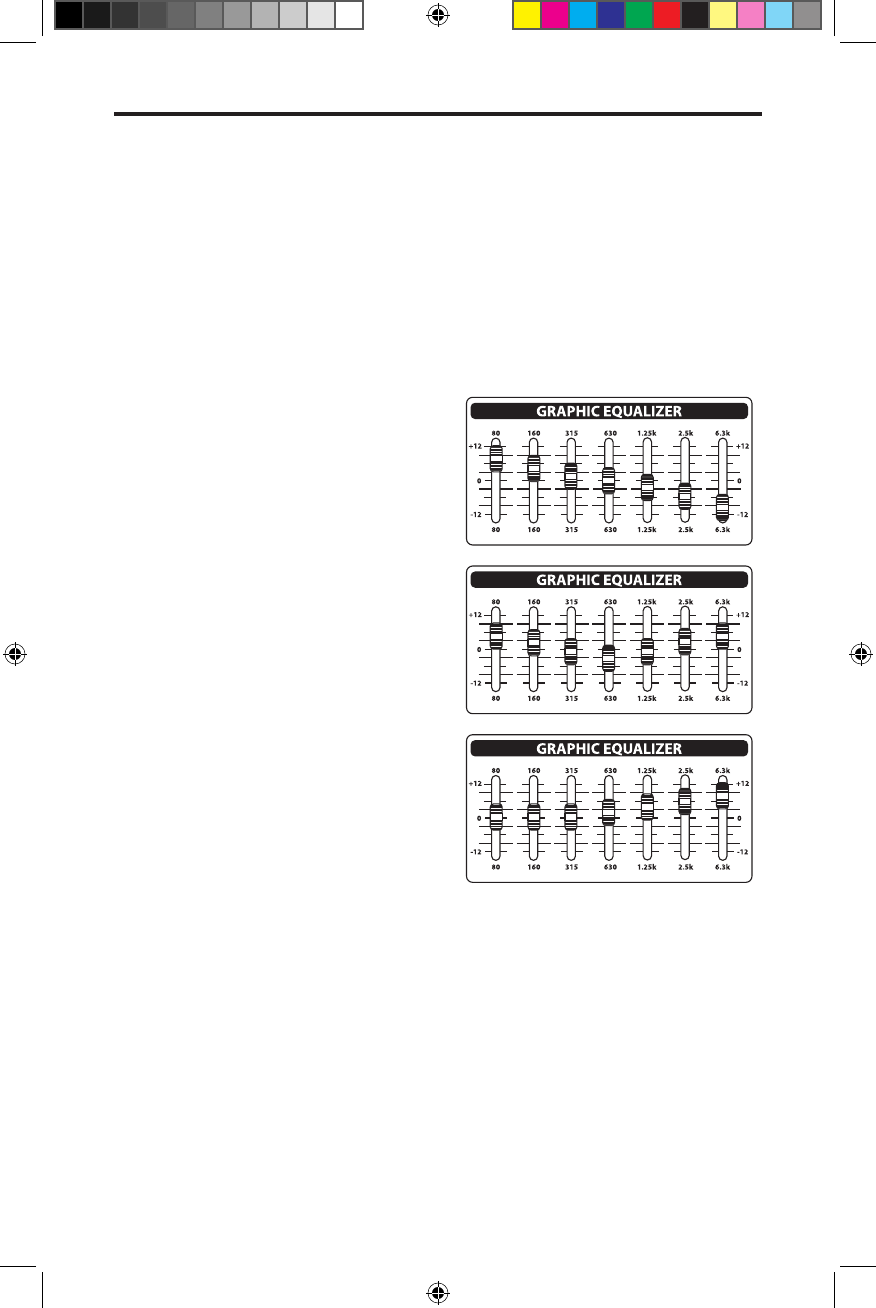
10
About Equalization
Then, one by one, raise and lower each slider,
listening carefully to the effect of each. Note that
turning all EQ controls up the same amount will
have virtually the same effect as simply turning
up the main Volume; conversely, turning them
all down the same amount will have virtually the
same effect as turning down the main Volume.
Both approaches are pointless (after all, that’s why
we gave you a main Volume control!)
In many instances, the best way to deal with
equalization is to think in terms of which fre
-
quency areas you need to attenuate, as opposed
to which ones you need to boost. Be aware that
boosting a frequency area also has the effect of
boosting the overall signal; specifically, too much
low frequency EQ boost can actually cause over
-
load distortion or even harm a connected speaker.
The specific EQ you will apply to your Keyboard
signal is very much dependent upon your par
-
ticular instrument and personal taste and playing
style. However, here are a few general sugges
-
tions:
• For that super-deep reggae or techno bass
sound, boost low frequencies slightly while
attenuating the highest ones (leave mid-
range frequencies flat or slightly attenuated),
as shown in the illustration on the right.
• To remove boxiness and make your instru
-
ment sound more “hi-fi,” try attenuating
mid-range frequencies while leaving low and
high frequency settings flat, as shown in the
illustration on the right.
• For a bright, cutting sound, try boosting the
high and high mid-range frequencies, as
shown in the illustration on the right.
• Whenever you get a really good EQ setting
for a particular instrument or song, write it
down (you’d be amazed how easy it is to for
-
get these things!).
Finally, as you experiment with the EQ controls of
the KM60 or Km100, don’t forget that your key-
board probably provides EQ control, so experi
-
ment by using both.
KM60100_ownman_v1.indd 10 11/21/05 10:38:46 PM


















